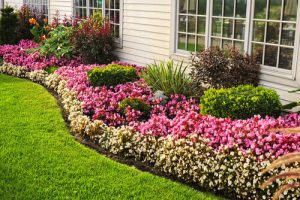 Being able to pursue your interests is a basic human right. For some of us however, those dreams are trampled by reality. Like flower petals crushed underfoot, many have come to accept that gardening with allergies isn’t pretty and will never be easy.
Being able to pursue your interests is a basic human right. For some of us however, those dreams are trampled by reality. Like flower petals crushed underfoot, many have come to accept that gardening with allergies isn’t pretty and will never be easy.
Allergies flare up in the spring, summer and fall when grasses and trees pollinate. The onslaught of symptoms can be discouraging and the notion of even being outside frightening to those who suffer from seasonal allergies.
Thus, gardening is typically written off as too risky or frustrating but the truth is that there’s a way! Below we’re going to list how you can enjoy gardening without being at the mercy of your allergies.
#1: Smart Growth
Plants do not all reproduce the same way. While some release pollen into the wind, others are pollinated by insects or disperse seeds. You’ll want to stick to large smelly flowers or female trees.
Flowers like Hydrangea, Gladiolus or Foxglove won’t bug you and female trees don’t make any pollen and have the added bonus of producing fruit!
If you’re stumped on what good choices are, the DIY Network has a great slideshow of allergy-friendly options you can consider adding to your garden.
#2: Get Rid of Chemicals
Common fertilizers, insecticides and other chemical gardening products are not only harmful to your health but they can actually make allergies worse. In order to avoid increasing your sensitivity, try using natural versions of gardening products instead.
#3: Timing is Everything
If you’re going to garden, doing so in the morning or late evening may help with your allergies. The breeze hasn’t picked up pollen yet and your odds of allergy free gardening get better when the weather’s in your favour.
Things to check for on your gardening day include the wind, cloud cover and humidity. Pollen activity is high when it’s dry and windy.
#4: Mind the Lawn
When cutting grass, make sure to keep windows shut for at least a few hours afterwards and stay indoors. Grass plays an important role and keeping your lawn trimmed short will prevent pollen from being released at a height that will bother you.
Additionally, Australian grasses are easier on those who have allergies. If you want to skip grass altogether, pebbles are a great choice and don’t make any pollen.
#5: Leave it Outside
Pollen is sticky and can hitchhike aboard your clothes or tools to continue it’s reign of terror inside. A little foresight and adoption of good habits will prevent you from suffering when you’re away from the garden.
Don’t hang up your laundry outside if you can because pollen will grab onto your wet fabrics. When you’re done gardening, leave your tools and gloves in a shed or somewhere outdoors.
Lastly, you’ll want to make sure that you don’t have anything that could flare up your symptoms on your body. Showering and separating gardening clothes are good preventative measures to take.
#6: Dress for Success
Don’t just assume your plant choices and best practices will keep you safe. Wear a mask when gardening, don’t roll up your sleeves and if necessary, take an antihistamine before you begin.
A hat will eliminate the worry of pollen in your hair and glasses could prevent you from accidentally brushing your eyes with anything that will set off your allergies.
#7: Be Safe
If your allergies are really wreaking havoc, then you need to see a doctor. There’s a chance they can help you make your allergies a thing of the past or give you helpful advice.
